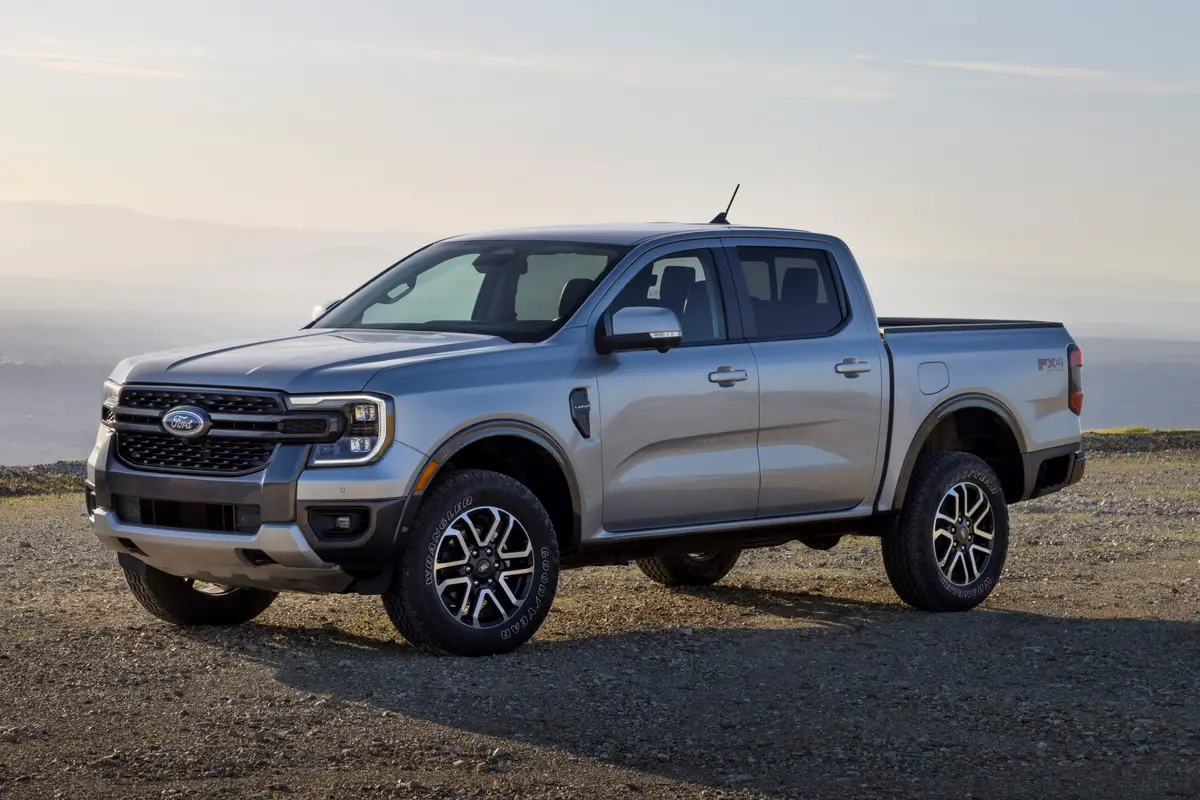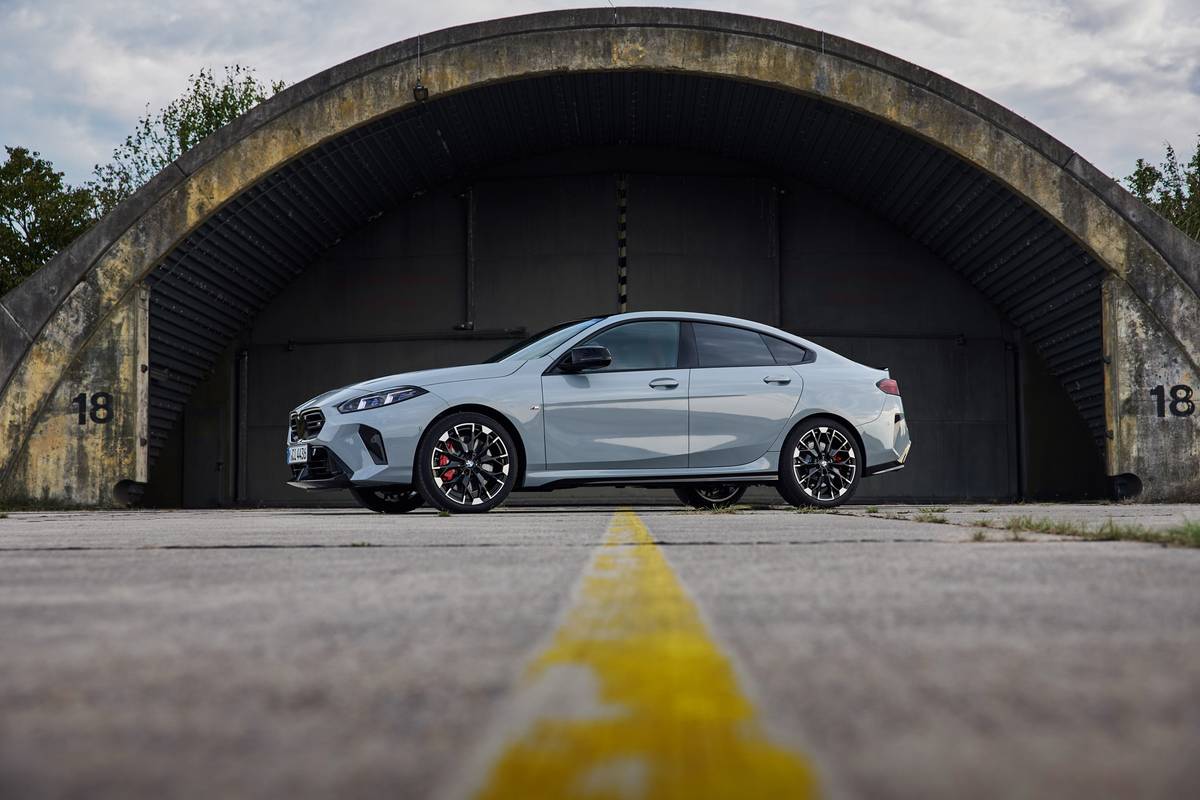Our view: 2009 Pontiac Vibe





































It’s amazing how quickly things can change in the car world. It wasn’t long ago that SUVs were the statement of choice for American drivers, but now, with the rapid rise of gas prices, they’ve gone from being coveted to being shunned. Smaller is better these days, and the hatchback segment in particular is experiencing a resurgence. All of this makes Pontiac’s redesign of its Vibe for the 2009 model year look very smart.
The Vibe is particularly well-positioned for buyers who want to wean themselves off their SUV addiction. It offers enough room for a family of four and their belongings, and is available with all-wheel drive — a must-have feature for some drivers. Aside from a few shortcomings in the cabin, it’s a well-executed model overall.
Styling
The Vibe, which is related to the Toyota Matrix, receives all-new exterior styling for 2009 that gives the car a much smoother appearance than before thanks to flowing lines in the side body panels and the disappearance of its cladding. The plainness of the doors, however, makes the Vibe look a little slab-sided, and I found its overall shape a little bloated and bulbous from some angles, where the previous generation offered more athleticism.
On the flip side, I like the Vibe’s new front-end styling. Pontiac’s recognizable twin-port grille is prominent and resembles the one on Pontiac’s new sport sedan, the G8. Other changes to the front — new headlights and a restyled lower bumper — give the Vibe a sporty appearance (see a side-by-side comparison with the 2008 model).
Ride & Handling
I tested a Vibe with all-wheel drive, a driveline that returns for 2009 after a brief absence from the lineup. This model’s four-wheel independent suspension skews toward the firm end of the spectrum — which isn’t all that different from a lot of cars. On the highway, the Vibe treats passengers to a comfortable ride. What does seem a bit excessive, though, is the amount of ambient noise you’ll hear from the suspension when traveling over bumps at highway speeds.
On curvy roads, the Vibe resists body roll well, confidently making its way through turns. The highly assisted electric power-steering system doesn’t give the driver much feedback, but this is an easy car to drive, and the lack of road feel is a minor issue for a car in this class.
Going & Stopping
The newly optional 158-horsepower, 2.4-liter four-cylinder engine that powers all-wheel-drive Vibes is strong enough to let you merge onto the highway without fear of being run down by traffic. Its four-speed automatic transmission quickly kicks down if you need a little boost of power, and otherwise goes about the business of shifting gears without much fanfare, which is just what you want from an automatic. The base engine for the Vibe remains a 1.8-liter four-cylinder that now makes 132 hp.
If gas mileage is a big concern, you might want to steer clear of the AWD Vibe, as it gets 20/26 mpg city/highway. A front-wheel-drive Vibe with the 2.4-liter four-cylinder and a five-speed automatic improves on those figures slightly, to 21/29 mpg. Fortunately, the 1.8-liter four-cylinder offers up to 26/32 mpg with the five-speed manual transmission. I briefly had the chance to drive a Vibe with the 1.8-liter four-cylinder and four-speed automatic (which drops mileage to 26/31 mpg) and found that it offers acceptable power, though the engine doesn’t sound great when revved hard. With fuel prices as high as they are, this model offers a good blend of performance and efficiency.
The base engine’s fuel economy compares favorably to the Mazda3, Scion xB and Volkswagen Rabbit, and only slightly trails the Nissan Versa’s 27/33 mpg rating with its continuously variable automatic transmission.
The Vibe’s brake-pedal feel leaves something to be desired; it feels a little spongy. There’s no reason to believe the Vibe’s all-disc brakes aren’t up to the task, however, as the hatchback comes to a stop without trouble.
The Inside
The redesigned interior improves the cabin’s appearance significantly, and it’s something that had to be done for the Vibe to stay competitive. It’s easy to see the new cabin was influenced by its previous design, as some of the same shapes carry over, but the new cabin is more upscale than the old version, just like the exterior.
It’s clear Pontiac gave most of its attention to the upper half of the cabin, as the dashboard, instrument panel and doors feature materials that are pleasing to the eye. The circular dash vents are nicely executed, too. Look down at the console and middle armrest and you’ll see less-appealing plastic and cruder finishes.
I applaud Pontiac for keeping the Vibe’s controls straightforward and simple. Most of them operate with appropriate refinement. Unfortunately, the Vibe’s air conditioning knobs don’t have that refinement; when you twist them to change a setting, their movement is unacceptably sloppy for a modern car.
Cloth front bucket seats are standard, and they offer good comfort and support. Leather-accented seats and a fold-flat passenger seat are optional.
The three-seat rear bench is less comfortable. The bottom cushion and backrest don’t have much contour to fit your body, and the cushioning is pretty firm. There’s adequate room, though; some adults might find their knees touching the back of the front seat, but there’s no need to splay your legs to either side. It’d be nice if the backseat could recline for enhanced road-trip comfort, but that feature isn’t offered.
Versatility
The Vibe’s 20.1-cubic-foot cargo area is larger than what you’ll find in a Mazda3 hatchback, a four-door Rabbit or a Versa hatchback, but it’s smaller than the xB’s 21.7-cubic-foot cargo area. It’s finished in hard plastic that should be easier to clean than carpet, but it’s also less adept at preventing cargo from sliding around; I had some groceries in plastic bags in the back and could hear them moving around while driving home from the store. The plastic floor has rubberized strips that are designed to keep cargo in place, but they didn’t work for my bags. I can see them being more effective at gripping a suitcase or duffel bag.
The 60/40-split backseat folds flat with the cargo floor, providing 49.4 cubic feet of volume. Like the cargo floor, the backside of the rear seat is finished in plastic with rubber strips.
The Vibe also offers an optional cargo management system with a built-in divider that, when raised from the floor, provides sectioned-off space for cargo.
Safety
As of this review, the Vibe hasn’t been crash tested by the Insurance Institute for Highway Safety. All Vibes have antilock brakes, side-impact airbags for the front seats, side curtain airbags, an electronic stability system, and active head restraints for the front seats.
Vibe in the Market
The Vibe has a low base price of $15,310, but that doesn’t include such niceties as air conditioning, cruise control, or power locks and windows. The all-wheel-drive model’s starting price of $18,910 gives you extra confidence for not a lot of cash. The Vibe may not be exciting, but it offers sensible transportation and enough room to pack a substantial amount of stuff without breaking your budget. That seems pretty compelling in times like these.
| Send Mike an email |

Mike Hanley has more than 20 years of experience reporting on the auto industry. His primary focus is new vehicles, and he's currently a Senior Road Test Editor overseeing expert car reviews and comparison tests. He previously managed Editorial content in the Cars.com Research section.
Latest news



